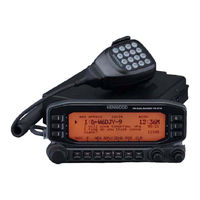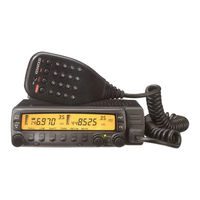Kenwood TM-733E Amateur Radio Transceiver Manuals
Manuals and User Guides for Kenwood TM-733E Amateur Radio Transceiver. We have 7 Kenwood TM-733E Amateur Radio Transceiver manuals available for free PDF download: Instruction Manual, Product Manual
Kenwood TM-733E Instruction Manual (123 pages)
144/430/440 MHz FM dual bander
Brand: Kenwood
|
Category: Transceiver
|
Size: 13.82 MB
Table of Contents
Advertisement
Kenwood TM-733E Product Manual (100 pages)
Multi-communicator VHF/UHF FM Dual Bander Getting Acquainted with APRS and EchoLink
Brand: Kenwood
|
Category: Transceiver
|
Size: 5.93 MB
Table of Contents
Kenwood TM-733E Instruction Manual (122 pages)
144/430/440 MHz FM DUAL BANDER
Brand: Kenwood
|
Category: Transceiver
|
Size: 2.97 MB
Table of Contents
Advertisement
Kenwood TM-733E Instruction Manual (123 pages)
FM DUAL BANDER
Brand: Kenwood
|
Category: Transceiver
|
Size: 16.45 MB
Kenwood TM-733E Instruction Manual (122 pages)
144/440 MHz FM dual bander, 144/430 MHz FM dual bander
Brand: Kenwood
|
Category: Transceiver
|
Size: 13.8 MB
Kenwood TM-733E Instruction Manual (63 pages)
144/430 MHZ FM DUAL BANDER and 144/440 MHZ FM DUAL BANDER
Brand: Kenwood
|
Category: Transceiver
|
Size: 4.49 MB
Table of Contents
Kenwood TM-733E Instruction Manual (63 pages)
144/440 and 144/430 MHz FM dual bander
Brand: Kenwood
|
Category: Transceiver
|
Size: 1.89 MB
Advertisement






